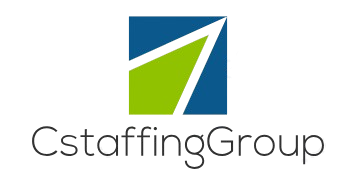Adopting Agile Practices in Non-Profits: A Comprehensive Guide
Non-profit organizations play a crucial role in society, addressing various social, environmental, and humanitarian issues. To effectively navigate the challenges and complexities they face, many non-profits are turning to agile practices. Agile methodologies, originally developed for software development, have proven to be highly adaptable and beneficial in various industries. In this article, we will explore the concept of adopting agile practices in non-profits, examining the benefits, challenges, and best practices associated with this approach.
The Evolution of Agile Practices

Agile practices have come a long way since their inception in the software development industry. The Agile Manifesto, created in 2001 by a group of software developers, emphasized values such as collaboration, flexibility, and customer satisfaction. Over the years, agile principles have been embraced by organizations across different sectors, including non-profits.
Non-profits are increasingly recognizing the need to be agile in today’s rapidly changing world. The traditional hierarchical structures and slow decision-making processes often hinder their ability to respond effectively to emerging challenges. By adopting agile practices, non-profits can become more responsive, innovative, and adaptive in fulfilling their missions.
Benefits of Adopting Agile Practices in Non-Profits

1. Enhanced Flexibility: Agile practices enable non-profits to respond quickly to changing priorities and external factors. By breaking down projects into smaller, manageable tasks, teams can adapt their strategies in real-time to meet evolving needs.
2. Improved Stakeholder Engagement: Agile methodologies emphasize continuous communication and collaboration with stakeholders. This approach helps non-profits build stronger relationships with donors, volunteers, and beneficiaries, leading to increased support and engagement.
3. Increased Innovation: Agile practices encourage experimentation and risk-taking, fostering a culture of innovation within non-profit organizations. By embracing new ideas and approaches, non-profits can find creative solutions to complex problems.
4. Greater Transparency: Agile methodologies promote transparency through regular feedback loops and progress updates. This transparency builds trust with stakeholders and ensures that everyone is aligned towards common goals.
5. Enhanced Project Management: Agile practices provide non-profits with a structured framework for project management, enabling teams to prioritize tasks, track progress, and deliver results more efficiently. This approach helps non-profits achieve their objectives in a timely manner.
Challenges of Implementing Agile Practices in Non-Profits

While the benefits of adopting agile practices in non-profits are clear, there are also challenges associated with implementing this approach. Some of the common challenges include:
Lack of Resources: Non-profits often operate with limited budgets and resources, making it challenging to invest in training and tools required for agile practices.

2. Resistance to Change: Traditional non-profit cultures may be resistant to change, especially when it comes to adopting new methodologies. Overcoming resistance and fostering a culture of agility can be a significant challenge.
3. Alignment with Mission: Non-profits must ensure that agile practices align with their mission and values. It is essential to strike a balance between agility and staying true to the organization’s core purpose.
4. Scaling Agile: As non-profits grow and expand their operations, scaling agile practices across teams and departments can be complex. Ensuring consistency and alignment throughout the organization is crucial for success.
Best Practices for Adopting Agile in Non-Profits
1. Leadership Support: Executive buy-in is critical for the successful implementation of agile practices in non-profits. Leaders must champion the agile mindset and provide the necessary resources and support for teams to adopt agile methodologies.
2. Training and Development: Investing in training and development is essential to build the skills and capabilities required for agile practices. Non-profits should provide opportunities for staff to learn about agile methodologies and tools.
3. Pilot Projects: Starting with small pilot projects can help non-profits test agile practices in a controlled environment before scaling up. This approach allows organizations to learn from their experiences and make adjustments as needed.
4. Continuous Improvement: Agile is all about continuous improvement and learning. Non-profits should encourage a culture of reflection, feedback, and adaptation to continuously enhance their agile practices.
Case Studies: Agile Success Stories in Non-Profits
1. Charity Water: Charity Water, a non-profit organization that provides clean and safe drinking water to people in developing countries, adopted agile practices to improve the efficiency of its projects. By implementing agile methodologies, Charity Water was able to streamline its processes and increase the impact of its work.
2. Save the Children: Save the Children, an international non-profit organization that works to improve the lives of children around the world, embraced agile practices to enhance its program delivery. By adopting agile methodologies, Save the Children was able to respond more effectively to emergencies and deliver aid to communities in need.
3. Oxfam: Oxfam, a global non-profit organization that fights poverty and inequality, adopted agile practices to increase collaboration and innovation within its teams. By embracing agile methodologies, Oxfam was able to improve its project management processes and achieve better outcomes for the communities it serves.
Conclusion
To wrap things up, adopting agile practices in non-profits can lead to increased flexibility, stakeholder engagement, innovation, transparency, and project management efficiency. While there are challenges associated with implementing agile methodologies, the benefits far outweigh the drawbacks. By following best practices, seeking leadership support, investing in training, and learning from successful case studies, non-profits can successfully embrace agile practices and enhance their impact on the communities they serve.
Are you ready to take your non-profit organization to the next level with agile practices? Share your thoughts and experiences in the comments below!




